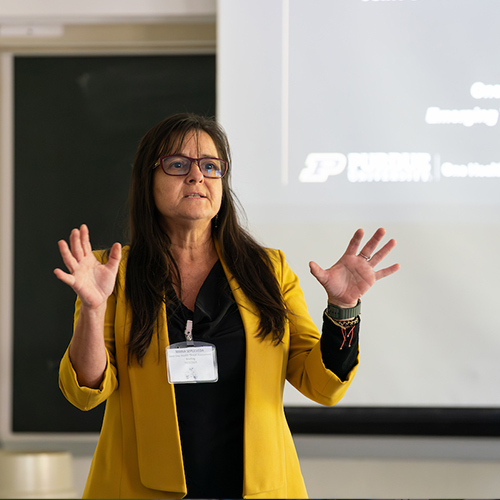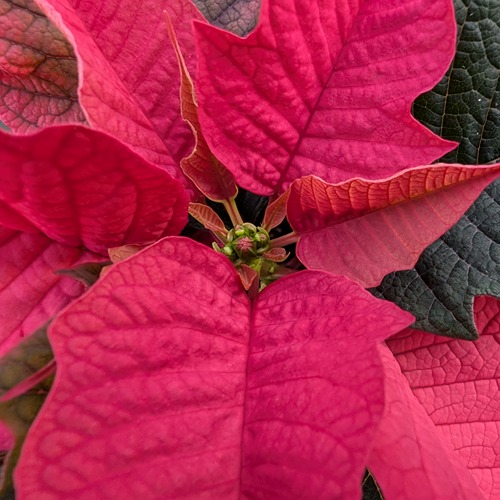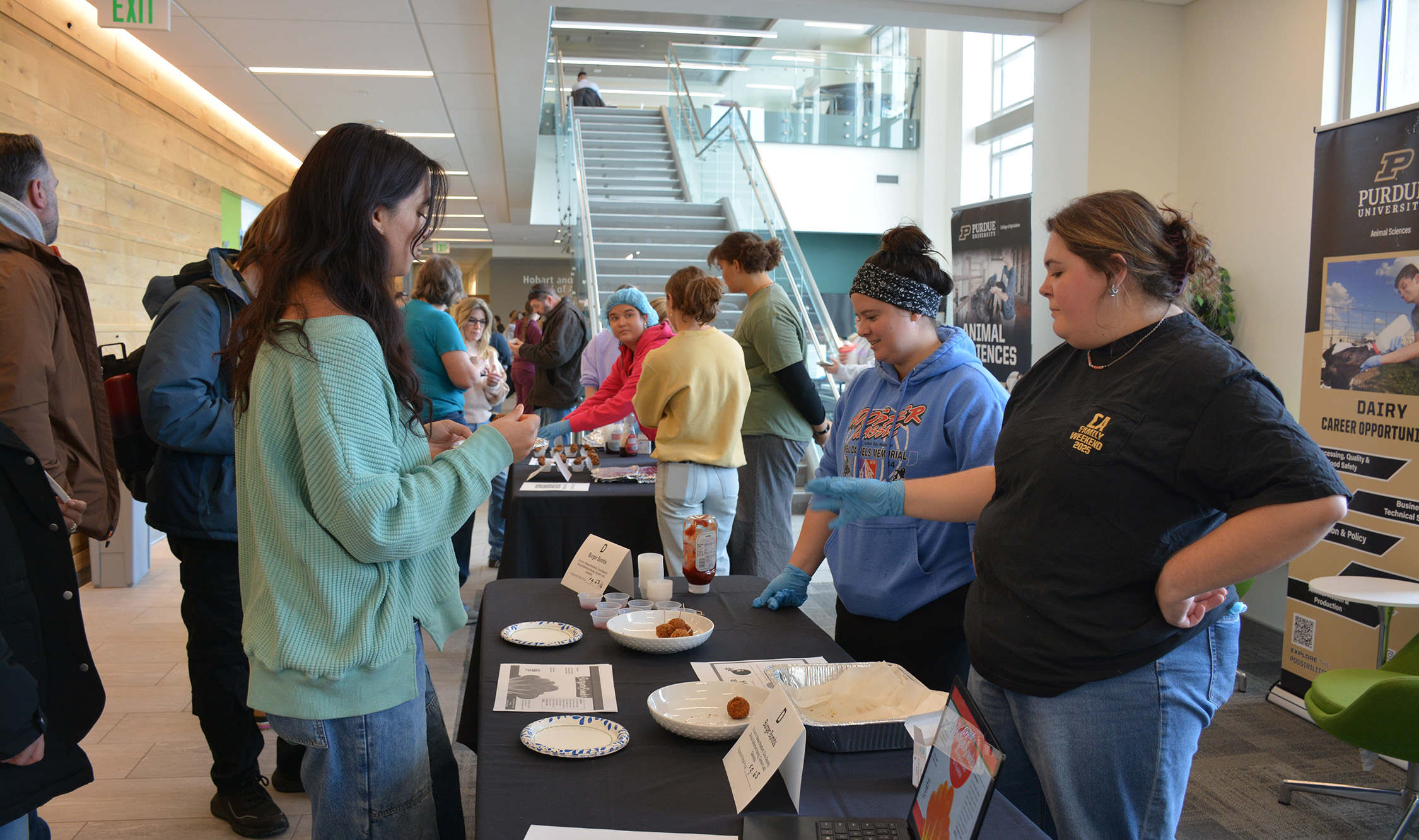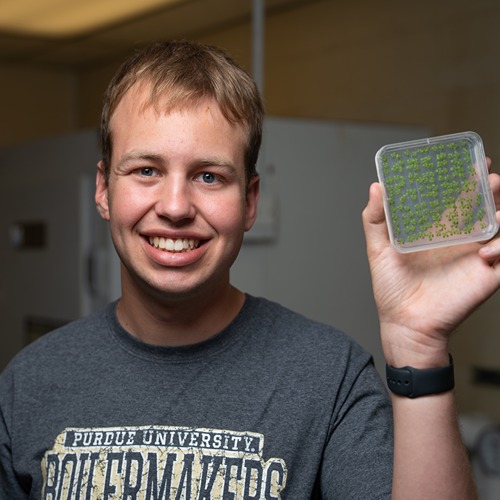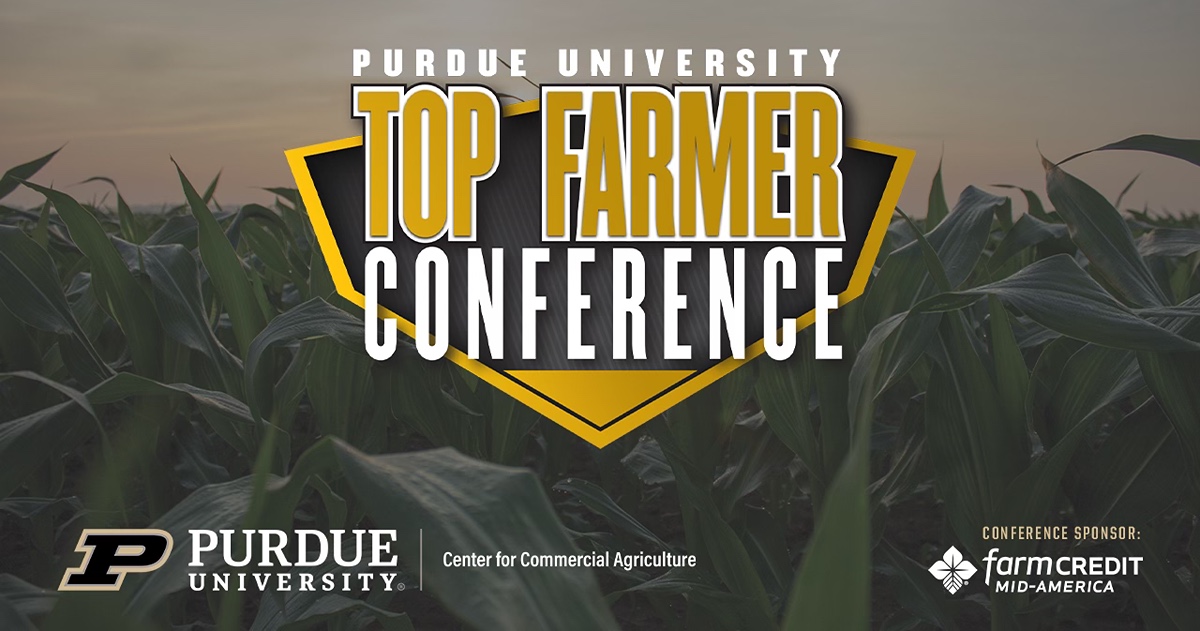Mural will serve as a window into research
Walking through the front doors of the new Wildlife Ecology Research Facility (WERF,) a blank white wall welcomed visitors to the newly constructed lab building. Jason Hoverman, professor of vertebrate ecology and building deputy for WERF, saw the opportunity to depict something meaningful instead.
Being located in the Purdue Wildlife Area, Hoverman said the idea of a mural depicting a wetland made sense since that ecosystem was right in WERF’s backyard and its biodiversity is often utilized in experiments.
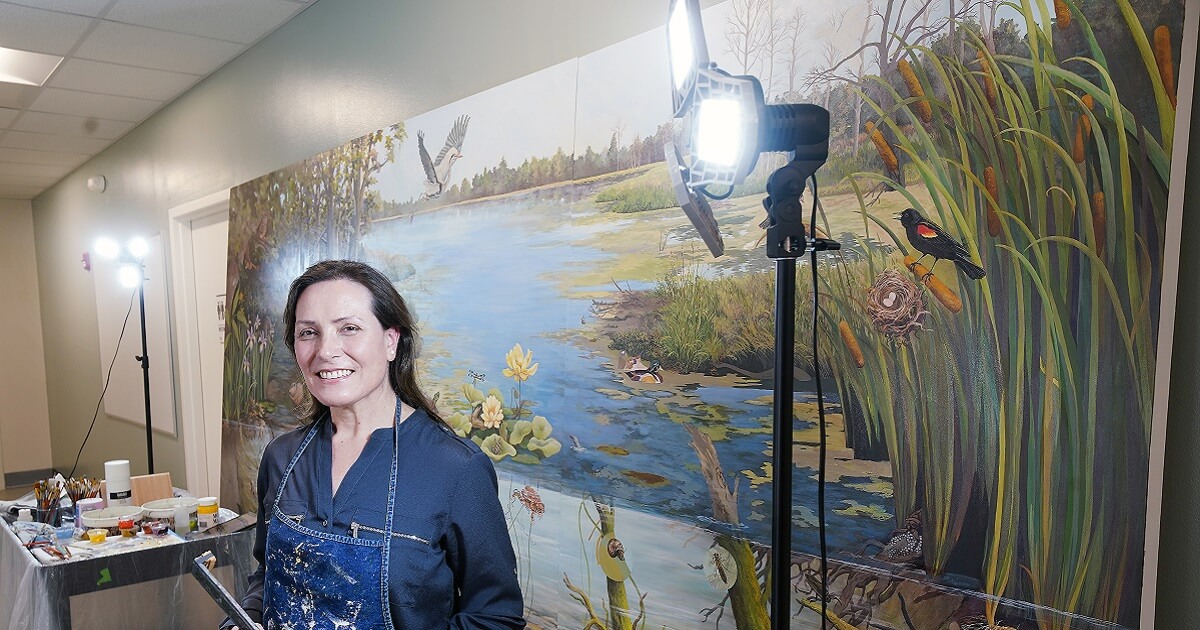
“One of the motivations for the mural was for when tours come through or when people drop by,” Hoverman said. “We can show them this mural and talk about diversity in species found in wetlands but also have a conversation about the threats they face, knowing over half of wetland habitats have been lost.”
Hoverman turned to Gabriela Sincich, a local artist who specializes in depicting nature. Sincich said she had been commissioned to create illustrations previously for other faculty members in biology, but a mural of this scale was a first for her.
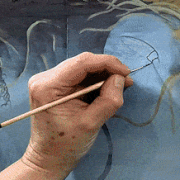
Spread across three panels measuring a total of 12 feet across by six feet tall, Sincich worked with photos and images Hoverman provided her, along with taking frequent trips out to the wetland area to see things with her own eyes.
“Being a science-themed mural, the viewer needs to be able to identify every species included, so I tried to be very careful with the detail of it all,” Sincich said. “The trust they put in me on this project was huge.”
Sincich said her goal for the landscape mural was to create the feeling of looking directly out a window into the wetland setting. Working on natural science commissions are always an eye-opening experience for her, Sincich said, feeling enlightened to the world around her once the piece has been completed.
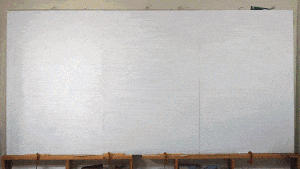
“My challenge with this piece was to recreate the emotion for the viewer of the moment when they were young and they found that love in nature. I wanted to bring that feeling back to them, that amazement and wonder,” Sincich said. “That fresh innocence is what I hope to bring to the viewer. A moment like that can be empowering even as an adult.”
Sincich said the project also evolved as she worked with Hoverman.
“Originally it was going to focus on aquatic animals, but then when it was decided on the entire ecosystem, we got into including everything down to specific insects,” Sincich said. “Finding that stopping point is very hard for me, even just the detail in the cattails in the landscape, I could continue painting forever if I could.”
For more information about the mural and the WERF Building, visit Purdue Wildlife Area (PWA).
